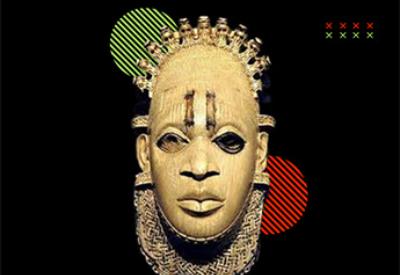
Competition Details
Everything you need to know about this competition

CGAfrica 2D Competition 2024: The Ancient Civilization of Benin Kingdom Sponsored by Framestore
The Ancient Civilization of Benin Kingdom - 2D Environment Design
The legacy of the Benin Kingdom, a beacon of African heritage, has inspired generations with its rich history, intricate art, and impressive urban planning.
This competition seeks to celebrate and reinterpret the essence of the Benin Kingdom through innovative environmental design. Entrants are invited to draw inspiration from the kingdom’s history and architecture to create designs that resonate with both the past and the present.
Brief History of the Benin Kingdom
The Benin Kingdom, located in present-day southern Nigeria, thrivedbetween the 11th and 19th centuries. Originally under the Ogiso dynasty, the kingdom’s real consolidation began with the Oba dynasty in the 12th century. Oba Ewuare, reigning in the late 14th century, is credited with initiating the kingdom’s golden age, marked by territorial expansion, administrative reforms, and cultural flourishing. The Oba, a title for the king, was both a political and religious figure, believed to be a descendant of the god Osanobua.
The kingdom’s contact with Europeans, starting with the Portuguese in the 15th century, led to trade and, eventually, to its colonization by the British in the late 19th century.
Reference links
The Architecture of Benin Kingdom
Benin City, the heart of the kingdom, was an architectural marvel. Wide streets, intricate walls, and moats showcased the kingdom’s urban planning prowess.
The walls of Benin, constructed over several centuries, were once considered the world’s largest pre-mechanical era earthworks. The royal palace, adorned with the famous Benin Bronzes, stood as a testament to the kingdom’s artistic and architectural brilliance.
See links:
Objectives
Environment Design
Create a fully rendered 2D environment concept that capture the mood,
architecture, and cultural significance of the Benin Kingdom. Consider
factors like camera angle, colour palette, lighting, depth-of-field, and
atmospheric effects to convey the ambiance and emotion of each space.
Callout Sheet
For each environment, produce a callout sheet that breaks down theindividual elements present in the rendered concept. This should include architectural features, decorative elements, natural features, and any other significant components. The callout sheet will serve as a blueprint for modelling and further development should be detailed enough to guide an art team in recreating your vision.
Download Example of What Your Submission Should Look Like
Guidelines
Historical Accuracy
While you have the creative freedom to interpret and re imagine, your designs should be rooted in the historical and architectural essence of the Benin Kingdom. Research the kingdom’s urban planning, religious structures, and the iconic Benin Bronzes for inspiration.
Mood and Atmosphere
The Benin Kingdom was known for its intricate societal structures and spectral significance. Your environment should reflect this, be it a bustling market square, residential huts, the grandeur of the royal palace etc.
Detailing
The Benin Kingdom was renowned for its artistry. Incorporate intricate patterns, motifs, and designs that echo the craftsmanship of the era.
Sustainability
While the challenge is rooted in history, consider incorporating elements that hint at sustainable practices